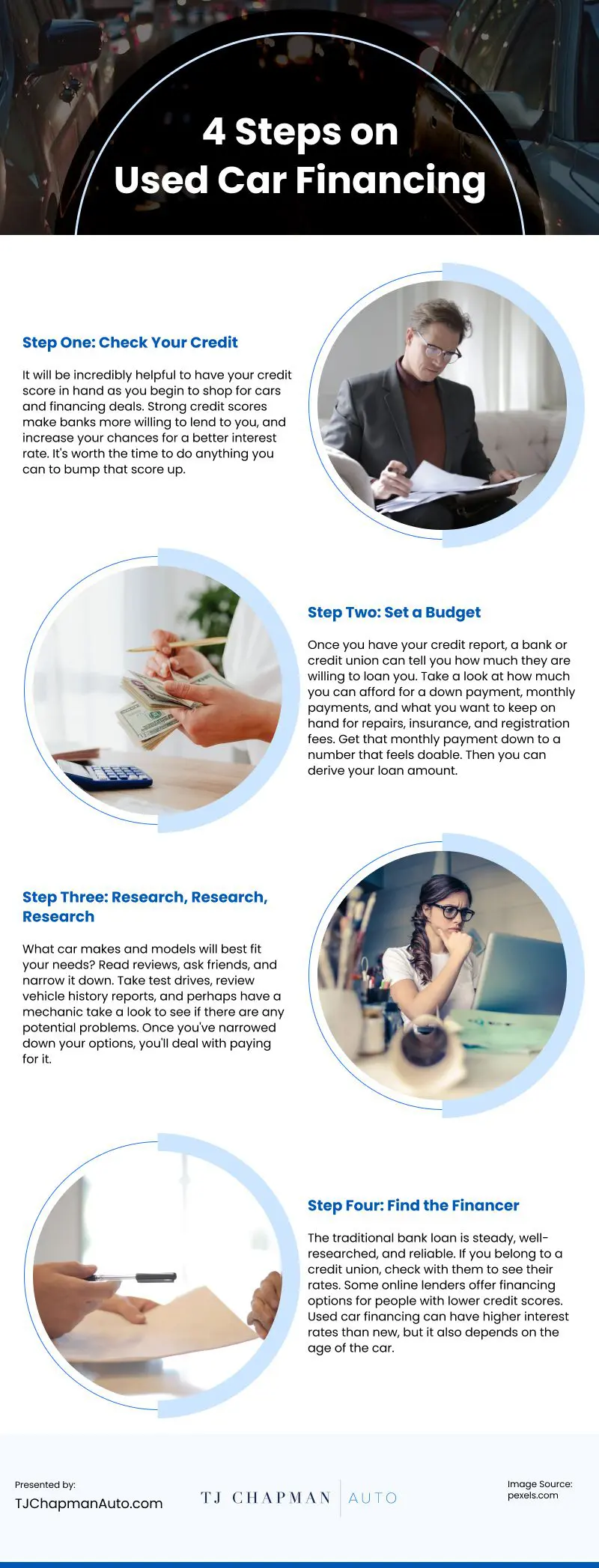
Buying a used vehicle is a terrific way to cut costs. As soon as you drive an automobile off the lot, it loses value. You won’t make money in the future unless you buy a car that was once owned by a well-known person. However, a car can be of great use to you, fulfill your demands, and act as a dependable vehicle for you and your family.
Cash is the best method for purchasing a vehicle. Interest rates, repayment terms, or financing charges are not your concern. However, we all frequently deal with less-than-ideal circumstances, and many of us don’t have enough extra money on hand to give the dealer a big envelope of cash. But you can still find an excellent automobile for a good price. There are financing alternatives available for used automobiles, and by doing a few crucial actions, you may find the right vehicle for the right price.
Step One: Evaluate Your Credit
Checking your credit score should be your first action. Strong credit ratings boost your chances of getting a better interest rate, besides making banks and credit unions more inclined to lend to you. Find out why your credit score is lower than you’d like it to be if you receive it. There may still be time for you to pay a payment that you neglected to do so with years ago. You might fix a mistake in your report. Doing everything you can to raise that score is worth it.
Step Two: Create a Budget
Choosing your budget is an important next step. After reviewing your finances and your credit report, a bank or credit union can tell you how much money they are willing to lend you. It doesn’t always follow that you can afford that much just because they’re willing to offer it to you.
Examine your financial capacity for a down payment, regular payments, and the amount you want to set up for maintenance, fuel, insurance, and registration costs. Reduce the monthly amount to a level you can afford. You can calculate your loan amount from there.
Step Three: Continually Do Research
Consider what you want in a vehicle, how frequently and where you drive. To narrow things down, read reviews and consult friends. Look at what is available once you have a short list of automobile makes and models to choose from. Contact used-car lots. Tell them what you’re looking for and encourage them to get in touch if one of the vehicles on your shortlist catches your eye. Check the online markets, and if one of your favorites appears, set up notifications.
Following all that effort, a few winners can rise to the top. But more research needs to be done. Use Kelly Blue Book or Edmunds to compare an actual value to the asking price of your top choices. Have test drives, look at car history reports, and even have a mechanic take a look to see if there are any potential concerns after you’ve narrowed down your possibilities.
Step Four: Identify the Lender
Lenders have a few possibilities, so taking the time to discover the best fit is worthwhile. The conventional bank loan is dependable, consistent, and well-studied. Even yet, there are situations when you can find better deals through alternative methods.
If you are a member of a credit union, inquire about their rates. Compared to large banks, credit unions are frequently more flexible and localized, with a focus on their members. If your credit is good, this will be your best choice. Financing for used cars may have higher interest rates than financing for new cars, but this also relies on the age of the automobile and the safety features that are included in the car.
There are still options available if your credit isn’t as good as you’d like it to be. Financing solutions are available from several internet lenders for borrowers with bad credit. The drawbacks include the possibility of higher interest rates and possibly more difficult customer service given that you’re working with an internet business.
Dealerships frequently have financing alternatives accessible. These may occasionally be your best option because they have the incentive to sell you the car and have a financial incentive to keep as much of your business as possible. New or secondhand car purchases involve a process. Be patient, do your homework, and stay within your budget.
source: https://blog.tjchapmanauto.com/the-step-by-step-guide-to-used-car-financing/
Comments
Download this infographic.
